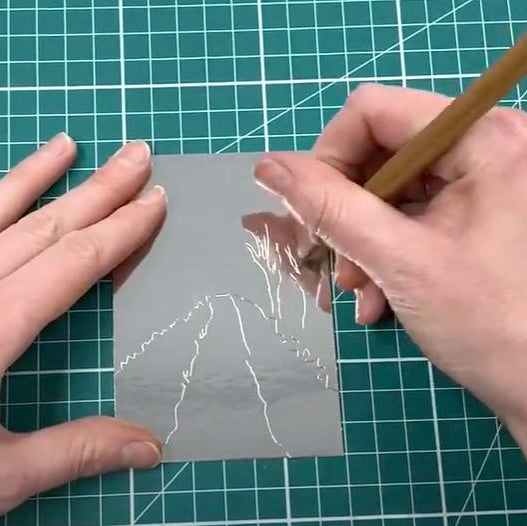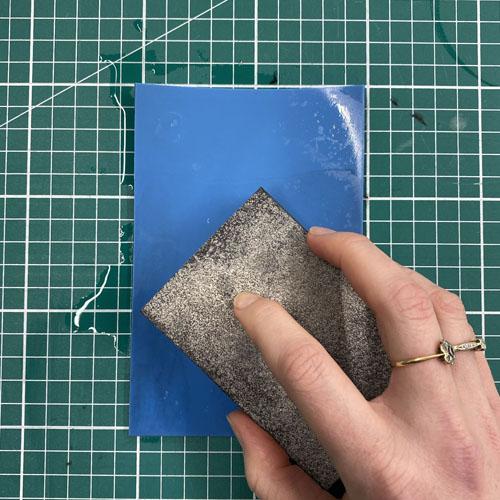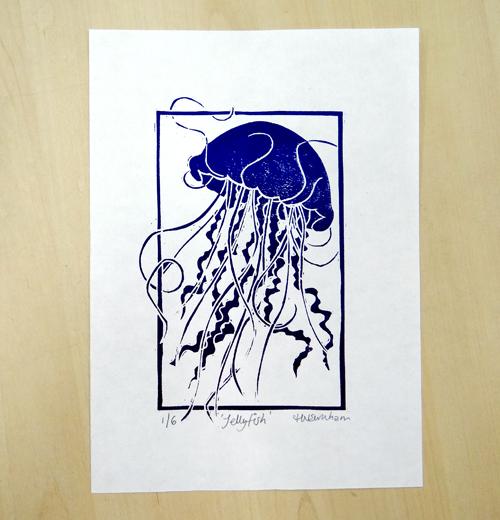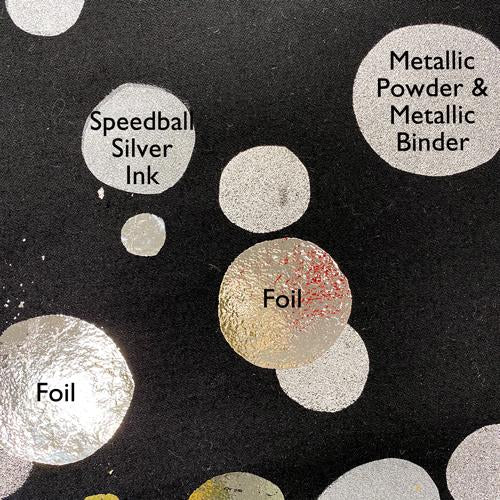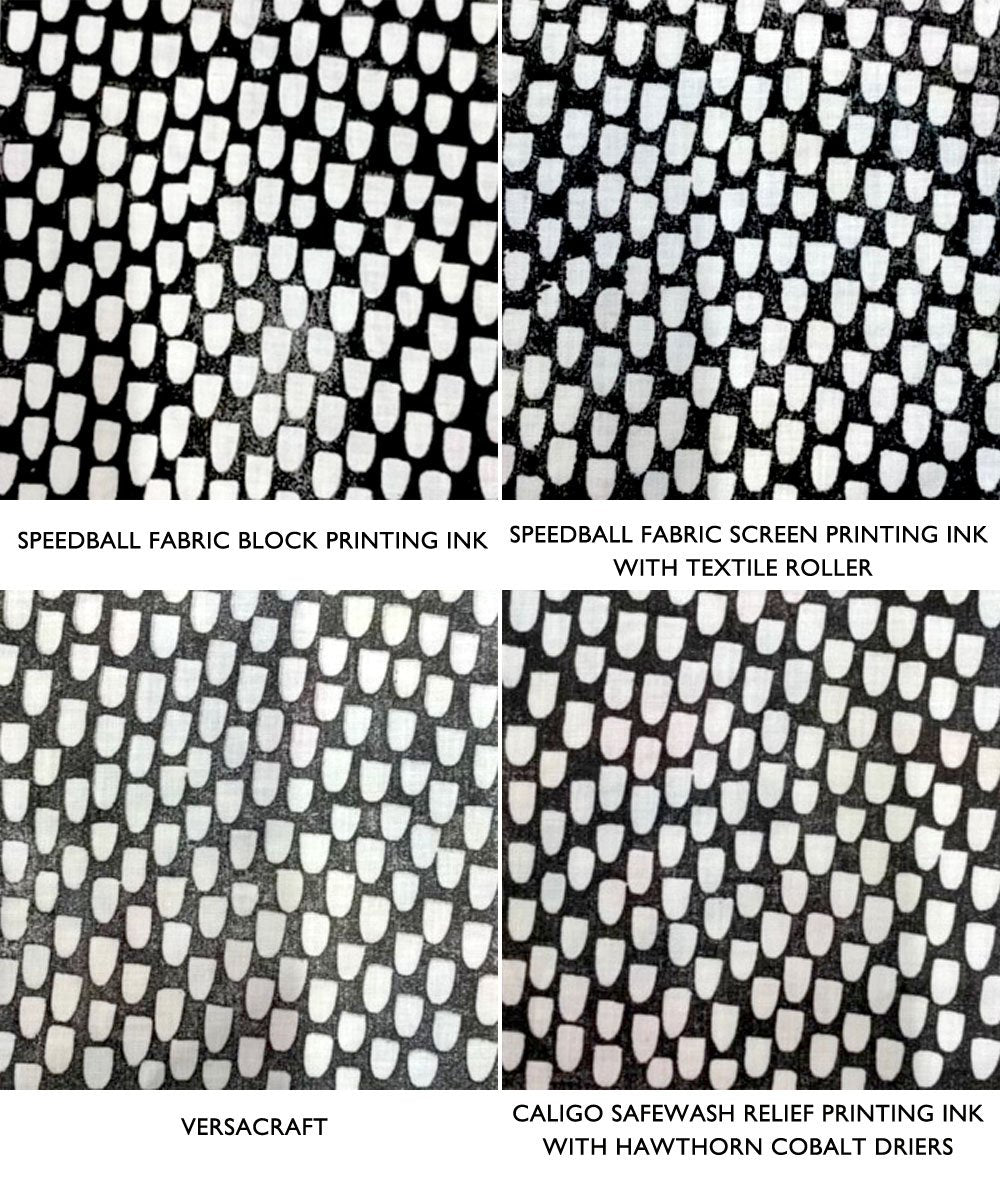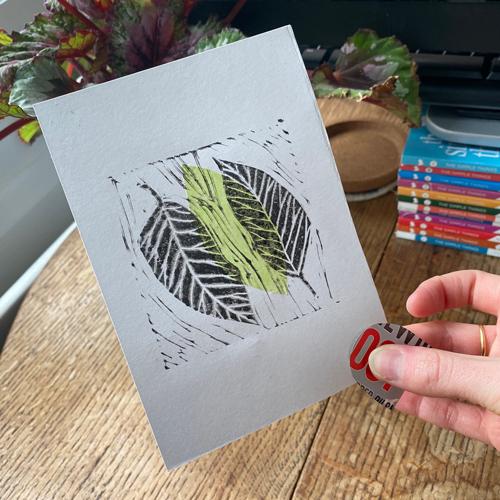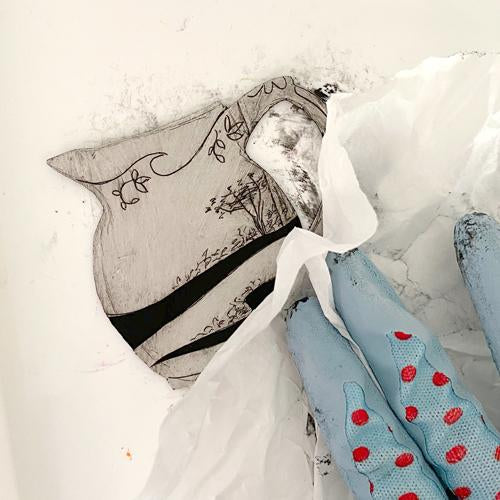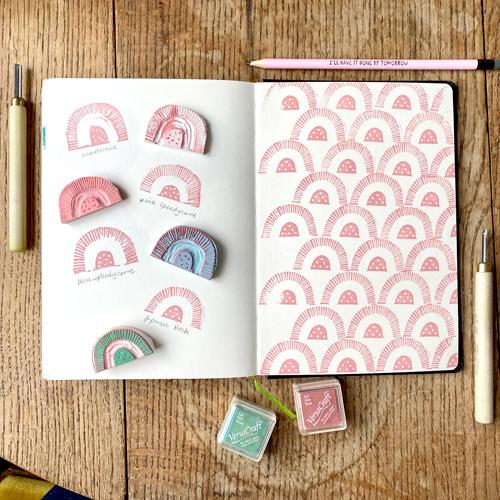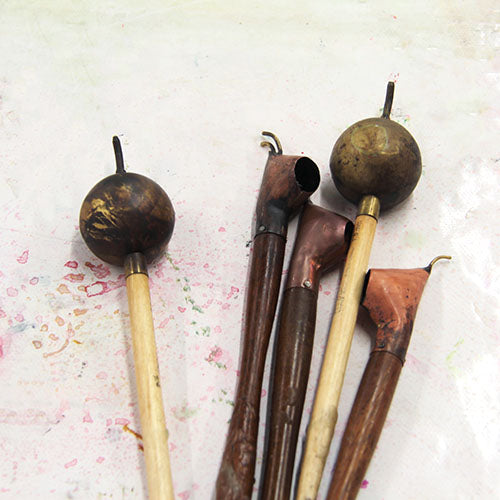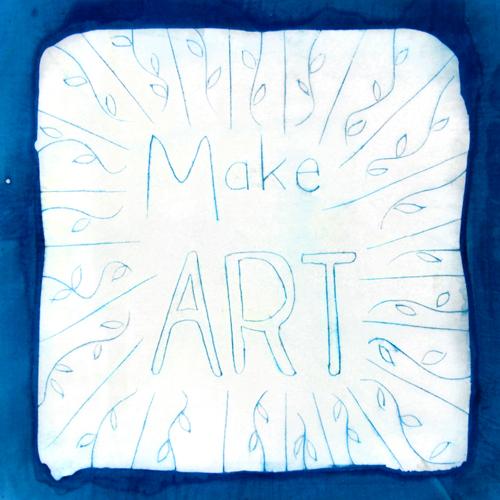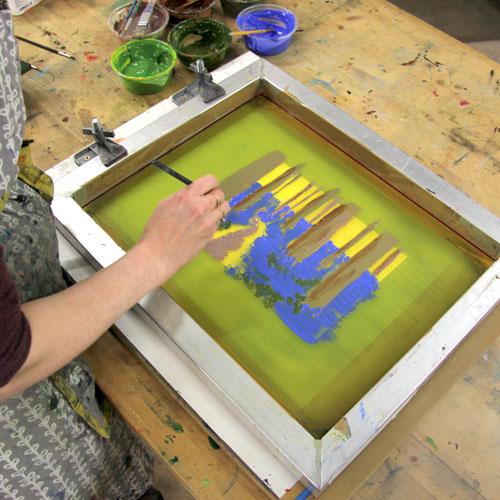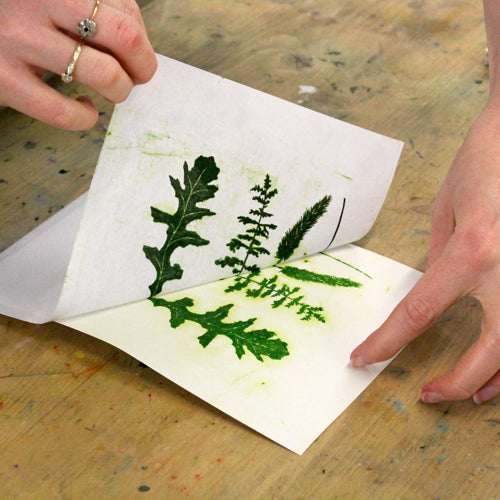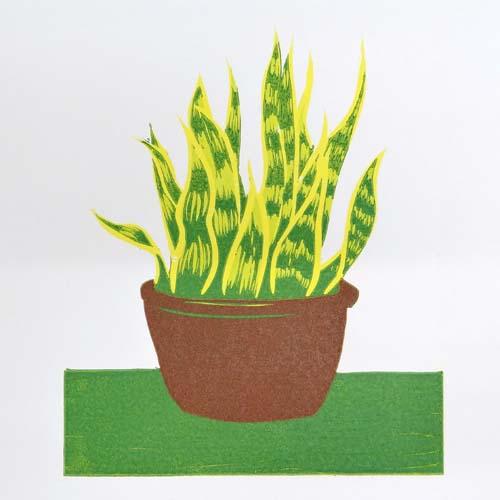Blog - Advice & Tips
-
Mirror Card is a great option for intaglio plate making. It's shiny and wipeable, making it brilliant for expressive inking and sketchy designs. Peel away the surface to create dark, inky areas too. Scroll to the ...
-
Sometimes when block printing, blocks can resist the ink and it splits on the surface. This makes it difficult to print a flat, even colour and can be so frustrating. This is particularly common on vinyl blocks when using water-based inks but can occur on lots of surfaces. Use this quick, easy technique to prepare … Continue reading "How to Fix Reticulating Ink when Relief Printing"
-
The ever-helpful Michael from Cranfield has some top tips for drying prints when working with oil-based inks. We’ve summarised some of his advice to help us with our own printmaking: When working with oil-based inks, the air in the room is very important in order for your prints to dry. The atmosphere should be warm … Continue reading "Drying Prints when Using Oil-Based Inks"
-
Choosing the right roller for your relief printing can get confusing. Different uses, budgets, sizes and preferences can dictate which roller is best for you. We’ve put together a guide to lino rollers to help you choose the best roller for you. There are several factors that decide how a roller will perform: There are … Continue reading "Relief Printing Rollers: A Comprehensive Guide"
-
Printmaking with metallics can add a real pop to your designs. There are a few different options to choose from when screen printing with metallics: pre-mixed metallic ink, metallic powder and textile foils. We’ve made this project using all three methods to show you the advantages of each one. We cut three paper stencils: one … Continue reading "Screen Printing Metallics: Ink, Powder or Foil?"
-
Mylar film is an extremely useful addition to your printmaking kit. It can be used to mask off areas when relief printing, as registration plastic for screen printing or even used to make stencils. In this project, we use mylar film to make a registration device and a mask for screen printing. Mylar film can … Continue reading "Setting up a Hinged Board for Screen Printing and Printing Using a Mylar Film Stencil"
-
We love printing with lino onto fabric – it can take your designs into loads of fun new places like t-shirts, homewares and bags! Back in 2016 we wrote a blog post about how to block print onto fabric and it’s still one of our most popular posts ever! Since then, we’re continued to refine … Continue reading "Lino Printing onto Fabric – Which Inks and Rollers to Use"
-
Enviromount is a brilliant paper-based drypoint surface. It can be scored with a sharp tool such as a drypoint needle, and the top surface can be peeled away. We were keen to try it out in the studio. A drypoint print is an intaglio technique in which lines are scratched into a plate, creating a … Continue reading "Drypoint with Enviromount"
-
When printing with intaglio methods (etching, drypoint, collagraph etc.), it’s important to print onto dampened paper. Imagine you’ve just inked up your plate, your paper is soaking in a tray of water or in a stack and it’s time to print. You wash your hands but there’s still a little inky grubbiness in your fingerprints … Continue reading "Make Your Own Paper Fingers"
-
Viscosity printing is a process that uses different viscosities (stickiness) of ink to enable you to ink up a plate with more than one colour – the different viscosities of ink will not mix. The foundations of this method can be used to create monotypes where a greasy medium can be used to resist ink. … Continue reading "Viscosity Monotype at Home"
-
Intaglio printmaking is a printmaking method using marks incised into a plate. Ink is worked into the recesses of the plate and is usually printed onto dampened paper through an etching press. Intaglio printmaking can create strong positive marks, interesting texture and tone – these results shouldn’t be missed out on if you don’t have … Continue reading "Printing Intaglio Without a Press: Tetra Pak Collagraph"
-
There are lots of different blocks available to make your own stamps. Unlike linocut blocks, stamp blocks are designed to be cut into smaller shaped pieces. We have tested four of our blocks to help you decide which is the best block for your project and budget:Pink Speedy Carve, white Mastercut, blue Speedy Carve Easy … Continue reading "Printing with Different Stamping Blocks"
-
Tjantings (or cantings) are beautiful Javanese tools for applying wax to cloth when making a batik. They have a long handle and a little copper or brass pot with a spout from which melted wax is let out. Read more
-
Sgraffito is a fast batik technique in which positive marks are scratched into the surface of the wax and filled with ink. Use sgraffito in combination with other batik methods or make a speedy sgraffito batik like in the project below: Begin by pinning out your fabric. Pre-washed, 100% cotton works best – we use … Continue reading "How to Make a Sgraffito Batik"
-
This week’s blog post has been created with Sophie, our fantastic work experience student! Over this past week, I have been doing work experience. It has been an amazing opportunity and I have leant some great new skills. Yesterday I tried screen printing, I drew out my own designs which I used in three different … Continue reading "Screen Printing onto Fabric with Translucent Colours"
-
Mono-screen printing is a great way of loosening up your printing style and producing a series of quick, spontaneous prints. Use as a standalone technique or in conjunction with photographic exposed screens, paper stencils and more. We are using a screen that has been exposed using photo emulsion to leave an open rectangle of mesh … Continue reading "Mono-Screen Printing"
-
Gum Arabic Transfer (also called paper lithography) is a marvellously fast technique in which photographic images can be added to sketchbooks, paper or mixed media pieces. This is one of the techniques used by Sue Brown in her fantastic work. We were lucky enough to have Sue teach in our studio and hope to have her back soon! … Continue reading "Gum Arabic Transfer"
-
One of the great things about printmaking is that one design can be used to create a whole edition of prints. That being said, editioning is something that some printmakers can find frustrating if you just want to get on with the next design! Knowing how to edition, sign and number your prints can be …
-
Reduction linocut is one of the printmaking methods favoured by Picasso. To make a reduction linocut we use only a single piece of lino. Layers of colour are printed on top of one another, each from the same block which is carved between each colour. A reduction linocut can be easier to register than a … Continue reading "Making a Reduction Linocut"
-
Indigo has been used to dye fabric in many cultures for centuries. Traditional Shibori folding techniques combined with indigo dye can create beautiful fabrics with intricate patterns with both subtle and bold shades of blue. Begin by preparing your dye vat. We are using an Indigo Dye Kit that includes all the ingredients for a …

